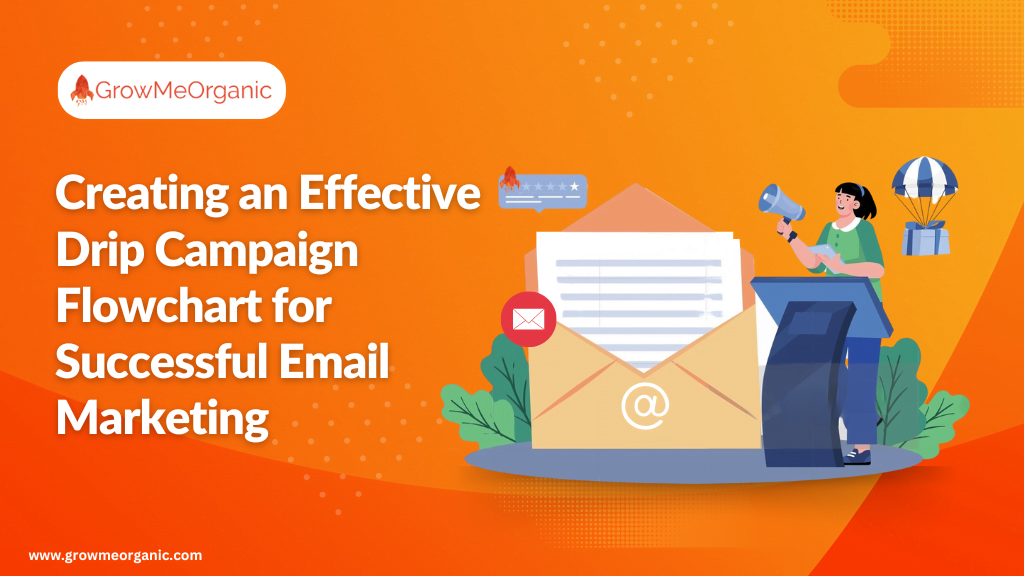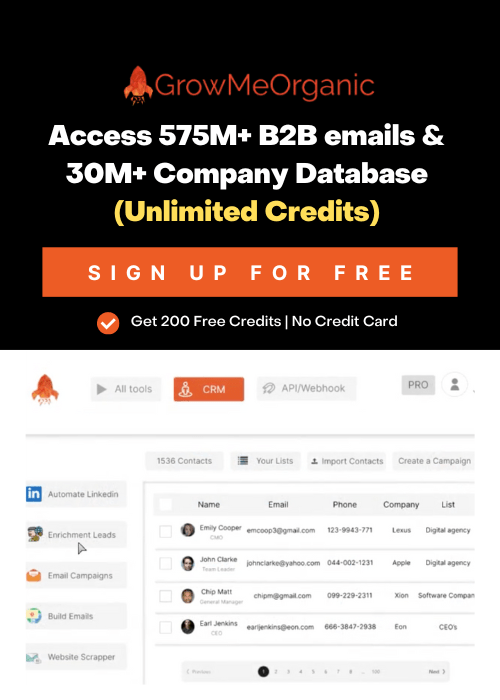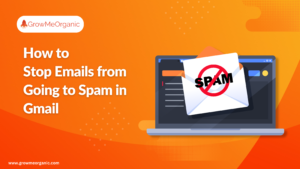Email marketing can be an incredibly effective way to build strong relationships with your customers and prospects. However, if you’re looking for long-term success with this type of marketing, you need to be using drip campaigns.
These automated email sequences make it easy to stay in touch with subscribers over time, building trust and increasing engagement. But how do you create a successful drip campaign flowchart?
In this post, we’ll take a closer look at the key components of effective drip campaigns and show you how to map out the customer journey from start to finish. Whether you’re new to email marketing or just looking for ways to improve your existing campaigns, this guide has everything you need! So let’s dive in and explore the world of drip campaign flowcharts together.
Understanding Drip Campaigns And Why They Are Crucial For Email Marketing
Drip campaigns have become an essential part of email marketing strategies, and understanding their importance is crucial to any business looking to generate leads and close sales. The technique involves sending a series of automated emails that are triggered based on user actions or preferences. This personalized approach not only helps build customer relationships but also increases engagement over time.
Drip campaigns can be vital in nurturing leads, making customers feel valued and heard, guiding them through the buying process, and delivering timely information that aligns with their interests. Another significant benefit of drip marketing is its ability to keep businesses top-of-mind for customers who might otherwise forget about them amidst a sea of competitors’ promotions in their inboxes. When done correctly, successful drip campaign emails can have above 40% open rates and help close more sales something no business wants to miss out on!
Defining Objectives And Goals For Your Drip Campaign
Defining objectives and goals for your drip campaign is the first step in achieving success. Before launching an email campaign, you need to ask yourself what you want to achieve with it. Do you want to target new customers or retain existing ones? Do you want more website traffic or increase sales? Defining these goals will help create a specific flowchart for your drip campaign.
By identifying the objectives of your campaign, you can also determine the best audience for it. This will help tailor messages that are relevant and valuable to them, leading to increased engagement rates over time. Email marketing software like Klaviyo can also be used as a tool to track metrics such as open and click-through rates that provide insights into customer behavior.
Remember that having concrete goals in mind helps streamline the creation process of email campaigns by knowing exactly which message is going out at what point in time. By focusing on creating targeted content for each stage of the buyer’s journey, businesses can reinforce their brand messaging while providing value at every touchpoint along the way.
Identifying Your Target Audience And Their Pain Points
Identifying your target audience is crucial in creating a successful drip campaign flowchart for email marketing. You need to know who you’re targeting and what their pain points are so that you can tailor the content of your emails to their needs. Segmenting your audience based on demographics, behavior, or interest can help ensure that the messages resonate with them.
Once you’ve identified your target audience, it’s important to understand their pain points. This could be anything from not having enough time in the day to get everything done or struggling with a particular task at work. By understanding these pain points, you can create targeted campaigns that focus on solutions rather than just selling products or services. When crafting your messaging, remember to speak directly to their challenges and how your business can help address those problems.
Overall, identifying your target audience and understanding their pain points is essential for creating an effective drip campaign flowchart for email marketing. It allows you to craft relevant content that resonates with them and helps build trust in your brand as a valuable resource for solving problems they face daily. Keep this in mind when planning out each stage of the customer journey through the drip campaign flowchart outlined above.
Creating A Drip Campaign Flowchart: Mapping The Customer Journey
Mapping out the customer journey is key to creating an effective drip campaign. In this section, we’ll show you how to identify touchpoints and triggers, create compelling email content, and design a layout that converts. Don’t miss out on these important steps!
Identifying Touchpoints And Triggers
Identifying touchpoints and triggers is critical to building an effective drip campaign flowchart for email marketing. Touchpoints refer to moments when the audience interacts with your brand, such as visiting your website or opening an email. Triggers are actions that prompt your drip campaigns, such as a new subscriber or abandoned cart.
By identifying these touchpoints and triggers, you can create a personalized customer journey that engages the audience at every stage. This involves mapping out the various stages of their journey, from initial awareness to post-purchase follow-up. By understanding where in this journey each touchpoint occurs and what will trigger it, you can deliver relevant content that builds trust and strengthens relationships.
Effective drip campaigns hinge on delivering valuable content at just the right time through each touchpoint. For example, sending a welcome series after someone subscribes provides them with helpful information about your brand’s offerings while nurturing them for future purchases. By integrating these touchpoints strategically into your drip campaign flowchart, you can keep your audience engaged throughout their entire customer journey while also increasing conversions and loyalty.
Creating Effective Email Content
Creating effective email content is a crucial component of any successful drip campaign. The first step to creating engaging body copy is to identify the pain points and needs of your target audience. This will help you craft messages that resonate with them, increasing the chances of conversion.
Next, it’s important to keep your message simple and concise. Use language that is easy for your audience to understand and avoid overly technical jargon or buzzwords. Pepper in some well-placed humor or storytelling elements to break up blocks of text and keep readers engaged.
Finally, don’t forget the importance of designing an appealing layout for your emails. Choose colors, fonts, and images that reflect your branding while also making it easy for recipients to quickly skim through the information they’re most interested in. By following these tips, you’ll be able to create email content that informs, entertains, and ultimately converts readers into customers.
Designing The Layout And Format
Designing the layout and format for your drip campaign is a crucial step toward successful email marketing. This involves creating an email template that aligns with your brand image while incorporating persuasive elements that motivate recipients to take action. The design should include captivating visuals, clear call-to-actions, optimized subject lines, and personalized messages.
It’s equally essential to ensure the email layout is mobile-friendly since most people access their emails on their phones or tablets. By doing this, you increase the chances of delivering a seamless user experience across all devices. Consider using images sparingly as they could significantly impact load times and distract from important information in your message.
In summary, designing an effective layout and format requires creativity and balance – be sure not to overwhelm readers with too much text but provide enough details to get them interested in what you are offering them. Keep it simple yet catchy by striking a balance between visuals and content without making it monotonous.
Best Practices For Drip Campaigns
To ensure your drip campaigns are successful, this section outlines best practices for personalization and segmentation, keeping emails simple and concise, timing them effectively, and analyzing campaign performance. Don’t miss out on these crucial tips!
Emphasizing Personalization And Segmentation
One of the crucial elements in creating an effective drip campaign flowchart is to prioritize personalization and segmentation. Personalization involves tailoring the email content according to the recipient’s interests, behavior, or preferences. Segmentation, on the other hand, divides your email list based on specific criteria such as demographics, user activity, engagement level, and more.
By personalizing your messages for each recipient and segmenting your audience strategically, you can provide more relevant information that resonates with their needs and interests. This approach not only enhances engagement but also fosters a deeper connection between your brand and customers.
Research shows that segmented campaigns drive 760% higher revenue compared to generic campaigns. When you personalize messages by addressing customers by name, location, or other personalized details like past purchases & browsing behavior – it will increase conversion rates for emails by over 26%. With this understanding in mind – emphasizing personalization at various touchpoints throughout a customer’s journey becomes critical in executing successful drip marketing campaigns.
Keeping It Simple And Concise
When it comes to creating an effective drip campaign, one of the most important things to keep in mind is simplicity. The goal is not to overwhelm your audience with too much information or too many emails but rather to provide them with useful and relevant content that keeps them engaged over time. This means focusing on quality over quantity.
To achieve this, you should aim to create concise and clear messages that get straight to the point without unnecessary fluff or jargon. If you are not succeeding in doing this, then opt for a summarizer tool. It will quickly make your message short by eliminating all the unnecessary or repetitive words.
Use a conversational tone that’s easy for your target audience to understand and avoid complicated language or technical terms unless absolutely necessary. Remember that people are bombarded with countless emails every day, so yours need to stand out by being brief but also impactful.
Additionally, keeping your drip campaign simply doesn’t just apply to the content itself – it also extends to the overall structure of your campaign. Stick to a clear timeline containing only essential touchpoints and make sure each message flows logically from one stage of the journey into the next. By doing so, you’ll increase engagement rates while keeping unsubscribes at bay.
Using Timing And Frequency Effectively
Timing and frequency are essential components for the success of a drip campaign. The right timing ensures that your audience gets the message at the most opportune time, while frequency determines how often they receive it. A well-timed drip email can help you to establish trust with your subscribers and keep them engaged with your brand.
It is advisable to create a sequential messaging strategy that sends an email series over a set period on a regular basis. This approach helps to keep recipients involved and anticipating your next communication. However, be careful not to bombard their inbox since too much of anything may be detrimental.
One key factor in determining optimal timing and frequency is understanding your audience’s behavior patterns. For example, B2B emails’ best days are weekdays, but consumer emails see higher engagement during weekends or midweek evenings when people have more free time for online activity. Understanding this means you can tailor messages accordingly and increase open rates as well as click-through rates (CTR).
In conclusion, using timing and frequency effectively should be part of any successful drip campaign flowchart plan. A consistent messaging schedule allows customers to anticipate communications from you while helping build trust within the relationship between sender and recipient. Remember always to analyze data regularly so that adjustments can be made where necessary towards achieving maximum results continually.
Monitoring And Analyzing Performance
Monitoring and analyzing the performance of your drip campaign is crucial to its success. By tracking metrics such as open rates, click-through rates, conversions, and unsubscribe rates, you can identify which emails are working well and which ones need improvement. This information allows you to optimize your campaign for better engagement and higher ROI.
One effective way to monitor performance is through A/B testing. This involves creating two versions of an email with slight variations in content or design, sending them both to a small segment of your audience and then analyzing the results before sending the winning version to the rest of your list. A/B testing can help identify what works best for your audience and improve overall engagement.
In addition to monitoring key metrics and conducting A/B tests, it’s important to regularly review and adjust your drip campaign based on feedback from customers or changes in their behavior. Stay up-to-date with industry trends and incorporate new techniques into your strategy as needed. With consistent monitoring, analysis, and optimization efforts in place – you’ll be able to create an effective drip campaign that drives more sales revenue over time!
Integrating Drip Campaigns With Marketing Automation
Integrating email drip campaigns with marketing automation is a powerful combination that can help businesses automate their lead-nurturing process. By setting up workflows based on specific actions, marketers can deliver relevant messages to subscribers at the right time, without having to constantly monitor and update the campaign manually.
Marketing automation allows for the personalization and segmentation of email lists based on subscriber behavior or demographics, which in turn makes for more effective drip campaigns. With this integration, businesses can save valuable time and effort while still providing quality content that resonates with their audience.
Furthermore, integrating drip campaigns with marketing automation enables brands to gain insights into subscriber behaviors through analytics tracking. This data provides valuable information about open rates, click-through rates (CTR), conversion rates, and overall campaign performance. Using these metrics effectively allows marketers to make informed decisions about optimizing future campaigns for better results.
Overall, integrating drip campaigns with marketing automation creates an efficient and impactful strategy for businesses of all sizes looking to increase engagement levels and drive conversions via email marketing efforts.
Testing And Optimizing Your Drip Campaign
Once your drip campaign is up and running, it’s important to continually test and optimize for maximum effectiveness. Learn more about A/B testing, measuring success rates, and addressing potential challenges in our comprehensive guide to creating an effective drip campaign flowchart.
A/B Testing
A/B testing is a critical aspect of creating an effective drip campaign. It helps you to gain insights into customer behavior and preferences, allowing you to optimize your emails for better engagement and conversion rates. By comparing two versions of the same email with slight variations in content or design, you can determine which one performs better based on metrics like open rates, click-through rates, and conversions.
Successful drip campaigns with above 40% open rates serve as inspiration for marketers when designing their own campaigns. With A/B testing, marketers can pinpoint the factors that contribute to high-performing emails and replicate them across their entire campaign. This allows them to continuously improve each email’s performance until they achieve desired results.
In conclusion, A/B testing is an essential part of any successful drip campaign strategy. Marketers should continuously test different elements of their emails such as subject lines, calls-to-action (CTAs), and timing intervals between messages to understand what drives engagement and conversion rate improvements ultimately.
Measuring Success Rate And ROI
Measuring the success rate and ROI of your drip campaigns is crucial for evaluating their effectiveness in achieving your goals. It helps you identify what works and what doesn’t, enabling you to optimize your campaigns for better results. To measure success, track metrics such as open rates, click-through rates, conversion rates, and revenue generated from the campaign.
To calculate ROI, divide the total revenue generated by the campaign by its overall cost. This will give you an idea of how much return on investment you are getting from running drip campaigns. With this information at hand, it’s easier to determine if a particular campaign is worth continuing or if changes need to be made in terms of content or targeting.
Remember that measuring success is an ongoing process that requires consistent monitoring and analysis. Use data-driven insights to make informed decisions about optimizing future email marketing campaigns for maximum impact on customer engagement and loyalty.
Addressing Challenges In Drip Campaigns
The article discusses common challenges businesses face when implementing drip campaigns, such as deliverability issues, low engagement and open rates, and high unsubscribe rates.
Deliverability Issues
One of the biggest challenges in creating an effective drip campaign flowchart is ensuring deliverability. Simply put, if your emails aren’t reaching your subscriber’s inboxes, they won’t be able to engage with your content. The article highlights that up to 21% of legitimate emails never make it to a subscriber’s inbox due to various issues such as spam filters and deliverability problems.
To address these issues, marketers need to follow best practices such as regularly cleaning their email lists and using authentication protocols like DKIM and SPF. Implementing these practices can improve the chances of successful email delivery by establishing trust between sender and receiver.
Furthermore, it’s essential for marketers to keep their messages relevant and engaging by understanding their target audience’s pain points. It has been observed that many subscribers mark emails as spam simply because they find them irrelevant or uninteresting. By keeping messages personal, concise, and valuable, you can increase open rates while also improving engagement levels over time.
Low Engagement And Open Rates
Low engagement and open rates are common challenges faced by marketers when implementing drip campaigns. These issues can be attributed to a variety of reasons, including poor timing or frequency of emails, irrelevant content, or an ineffective email subject line. However, these problems can be overcome with strategic planning and testing.
One effective strategy for improving engagement and open rates is personalization. By segmenting your audience based on their interests or behaviors, you can create tailored content that resonates with each individual recipient. A/B testing different variations of email subject lines and call-to-actions can also help identify what prompts clicks and conversions.
Another factor to consider when dealing with low engagement is the overall design of your email campaign. Using visually appealing graphics paired with concise messaging makes it easier for recipients to quickly digest information without feeling overwhelmed or disinterested.
Overall, addressing low engagement and open rates in your drip campaigns requires a combination of data analysis, personalization tactics, and consistent optimization efforts. With careful attention paid to these areas, businesses can succeed in generating meaningful results from their email marketing efforts.
High Unsubscribe Rates
High unsubscribe rates can be a significant challenge for email marketers. Customers may lose interest in receiving emails from your company if they feel bombarded with too many messages or receive irrelevant content. Therefore, it is essential to keep a check on the unsubscribe rates and find out what’s causing them.
One reason for high unsubscribe rates could be that customers did not receive the expected value from your drip campaign. Thus, it is crucial to define clear objectives and goals for each message in your campaign so that customers know what to expect and recognize the value they will receive.
Another factor contributing to high unsubscribe rates could be too many emails sent in a short period. It is advisable to space out your messages appropriately instead of overwhelming subscribers with multiple emails at once. Monitoring open and click-through rates also helps identify when engagement levels are dropping off, allowing you to adjust timings accordingly.
Conclusion And Next Steps
In conclusion, creating an effective drip campaign flowchart is crucial for businesses that want to thrive in today’s highly competitive market. By defining your objectives and goals, identifying your target audience and their pain points, and mapping out the customer journey with touchpoints and triggers, you can create a successful campaign that generates sales and builds strong relationships with customers.
Remember to keep it simple yet personalized, use timing and frequency effectively, monitor performance closely, test regularly, and optimize accordingly. With the right approach, you too can achieve above 40% open rates on your drip campaign emails! So take action today by integrating drip campaigns into your marketing automation strategy – the results might just surprise you!
FAQs:
1. What is a drip campaign flowchart for email marketing?
A drip campaign flowchart is a visual map that outlines the steps and sequences involved in sending automated, targeted emails to potential or current customers over time. These campaigns are designed to deliver relevant content at specific intervals based on customer behavior or segmentation.
2. How can I create an effective drip campaign flowchart?
To create an effective drip campaign flowchart, you should start by identifying your target audience and understanding their unique preferences and needs. Then, determine the goals of your campaign and map out the sequence of messages that will help you achieve those objectives. It’s important to test different variables such as messaging frequency, timing, and content types throughout your campaigns to optimize engagement rates.
3. What types of content work best in a drip campaign?
Content types that work well in a drip campaign include educational resources like ebooks or whitepapers, personalized product recommendations based on past purchases or browsing history, nurture-style emails with helpful tips or insights related to industry topics, promotional offers such as discounts, special sale prices or free shipping codes.
4. Are there any common mistakes I should avoid when creating my own drip campaigns?
Some common mistakes to avoid when creating a successful email marketing automation strategy include failing to segment audiences effectively which leads to irrelevant messages being sent; not testing variations regularly which causes low open/click-through rates; forgetting about mobile optimization which results in hard-to-read formatting issues for users accessing via smartphones/tablets; ignoring metrics analytics means poor measurement ROI so it’s necessary to keep a close eye on statistics such as open-rates/conversions spend etcetera over time adjusting accordingly if needed.
About Post Author
Anant Gupta
Growth Hacker, Marketing Automation Enthusiast & Founder of GrowMeOrganic



![Mailifier Review: Email Validator Checker Tool! [Lifetime Deal]](https://www.growmeorganic.com/wp-content/uploads/2024/07/mailifier-review-300x169.png)




